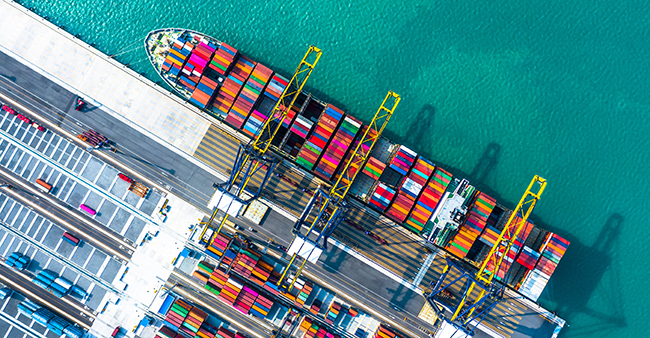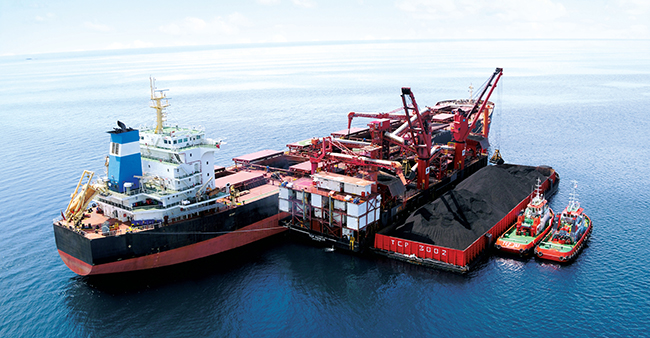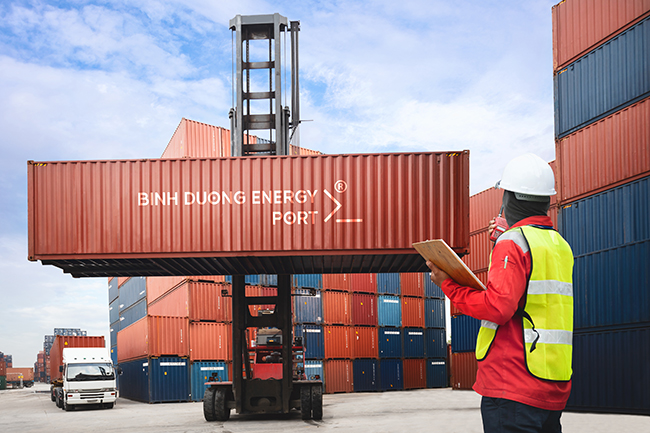HCM City collects port infrastructure fees from 1/4
After two delays of the plan, Ho Chi Minh City started to charge port infrastructure from 0:00 on April 1, the lowest level is 15,000 VND per ton, the highest is 4.4 million VND for a 40-foot container.
Information was given by Mr. Nguyen Ngoc Tuan, Director of the City’s Inland Waterway Port Authority Ho Chi Minh City, said at the press conference announcing the implementation of the port infrastructure fee collection in the area, on the morning of March 25. Before operating, the toll collection system has been tested for a month so that businesses can approach and get used to the implementation process.

Mr. Nguyen Ngoc Tuan, Director of the City’s Inland Waterway Port Authority Ho Chi Minh City, at a press conference on the morning of March 25. Photo: Gia Minh
The fee from the beginning of April applies at least 15,000 VND per ton of goods not packed in containers (import and export goods are declared in Ho Chi Minh City); the highest is 4.4 million VND per 40-foot container (temporary import for re-export, bonded warehouse, border-gate transfer). Free cases include imported goods serving security, national defense, social security, overcoming natural disasters, disasters and epidemics.
The fee collection process is implemented electronically, not using cash. Charge payers declare information on the electronic customs clearance system. The data integrated with the port toll system will automatically notify the fee. After completing the payment of fees, the bank will send a notice, print an electronic receipt and share it through the port system to confirm the shipment of goods through the port.

Port infrastructure fees of the project. Photo: Department of Transport
According to Mr. Tuan, the process of testing the system’s features has been checked and ensured smoothly before official operation. The parties also prepare a situation to handle if there is a problem, to ensure that it does not cause congestion or affect the operation of the business. The revenue is public and transparent on the system and businesses can look up.
The leader of the Inland Waterway Port Authority also said that the previous toll collection plan was planned by the city from July 1, 2021, but due to Covid-19, it should be postponed to October 2021 and then moved to the beginning of April. this year. During this period, the estimated revenue is about VND 2,200 billion, which is considered as a part of supporting businesses to recover after the epidemic.
Mr. Bui Hoa An, deputy director of the Department of Transport, said that after deducting the proceeds from the toll collection unit, they will pay the budget and arrange for investment in transport infrastructure around the port. In the immediate future, the city’s revenue will be used to invest in projects in Cat Lai and Phu Huu port areas (Thu Duc City), such as expanding Nguyen Thi Dinh, Nguyen Duy Trinh, and Vo Chi Cong streets; complete My Thuy intersection…
In Saigon port area (District 4), the city will invest in building Thu Thiem 4 bridge connecting through District 7 and reducing congestion at Huynh Tan Phat – Luu Trong Lu – Nguyen Van Linh intersection; expanding Luu Trong Lu road connecting Tan Thuan port with Nguyen Van Linh street…

Seaport system in HCM city. Graphics: Thanh Huyen
According to Mr. An, if the toll collection plan is correct from July last year, by 2025 the budget revenue is estimated at about 16,000 billion VND, contributing to speeding up the implementation of the above projects. “Toll collection and infrastructure re-investment around the port is a long-term support for businesses,” said Mr. An, adding that when the traffic improves, the time to transport goods is shortened, the transport units and Import-export enterprises benefit more.





